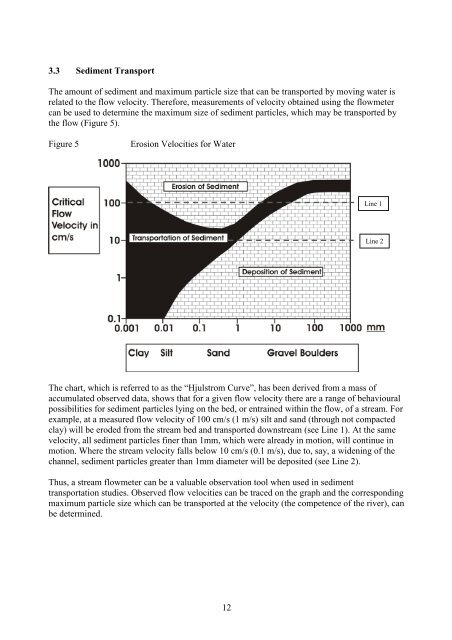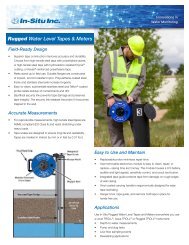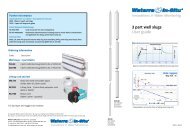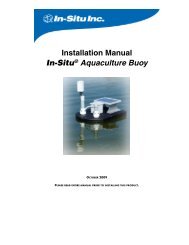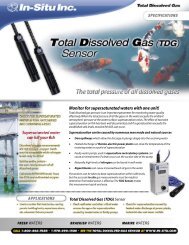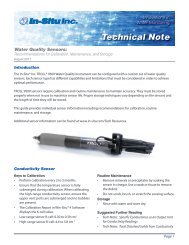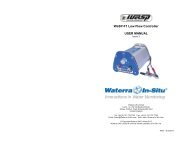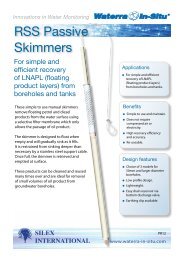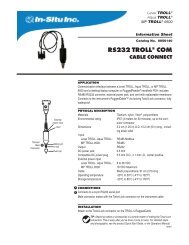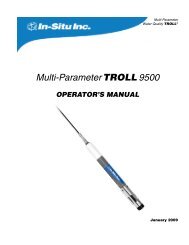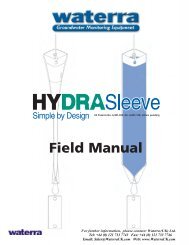TM16 - Stream Flow Meter Manual - Waterra-In-Situ
TM16 - Stream Flow Meter Manual - Waterra-In-Situ
TM16 - Stream Flow Meter Manual - Waterra-In-Situ
- No tags were found...
You also want an ePaper? Increase the reach of your titles
YUMPU automatically turns print PDFs into web optimized ePapers that Google loves.
3.3 Sediment Transport<br />
The amount of sediment and maximum particle size that can be transported by moving water is<br />
related to the flow velocity. Therefore, measurements of velocity obtained using the flowmeter<br />
can be used to determine the maximum size of sediment particles, which may be transported by<br />
the flow (Figure 5).<br />
Figure 5<br />
Erosion Velocities for Water<br />
Line 1<br />
Line 2<br />
The chart, which is referred to as the “Hjulstrom Curve”, has been derived from a mass of<br />
accumulated observed data, shows that for a given flow velocity there are a range of behavioural<br />
possibilities for sediment particles lying on the bed, or entrained within the flow, of a stream. For<br />
example, at a measured flow velocity of 100 cm/s (1 m/s) silt and sand (through not compacted<br />
clay) will be eroded from the stream bed and transported downstream (see Line 1). At the same<br />
velocity, all sediment particles finer than 1mm, which were already in motion, will continue in<br />
motion. Where the stream velocity falls below 10 cm/s (0.1 m/s), due to, say, a widening of the<br />
channel, sediment particles greater than 1mm diameter will be deposited (see Line 2).<br />
Thus, a stream flowmeter can be a valuable observation tool when used in sediment<br />
transportation studies. Observed flow velocities can be traced on the graph and the corresponding<br />
maximum particle size which can be transported at the velocity (the competence of the river), can<br />
be determined.<br />
12


